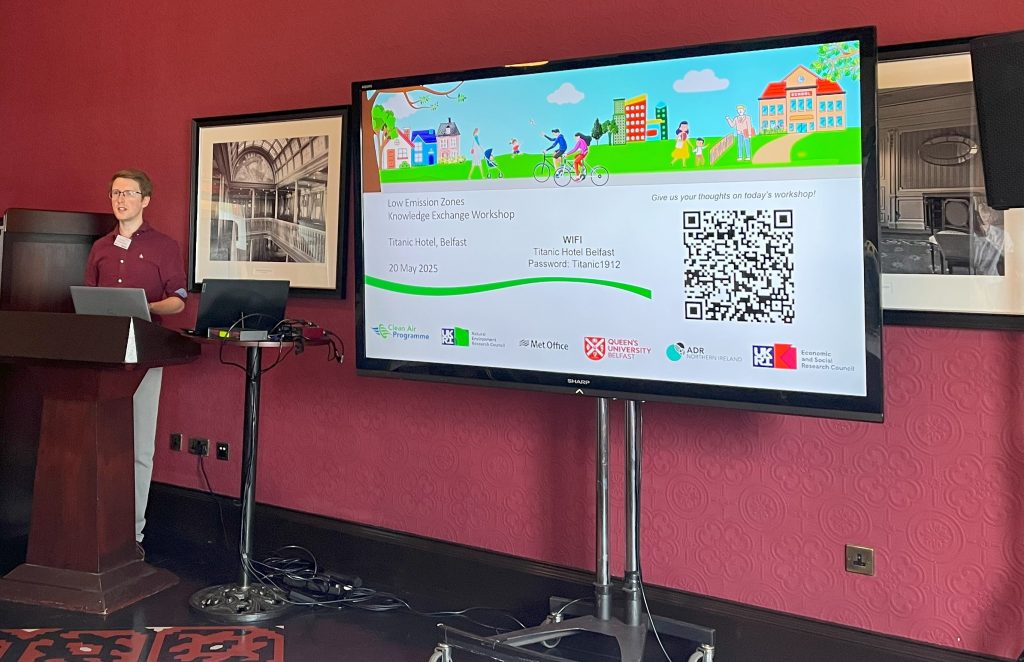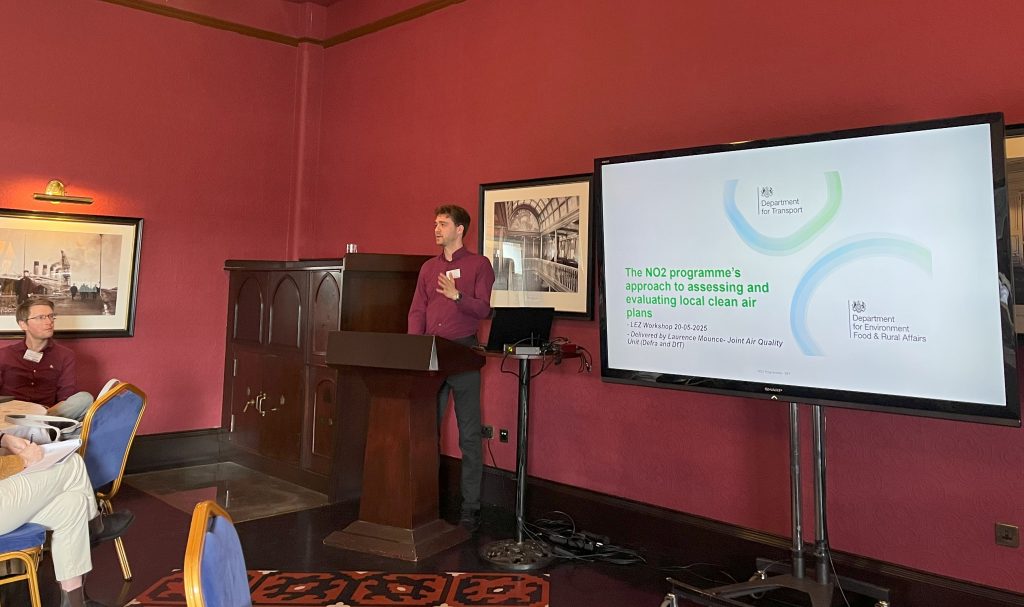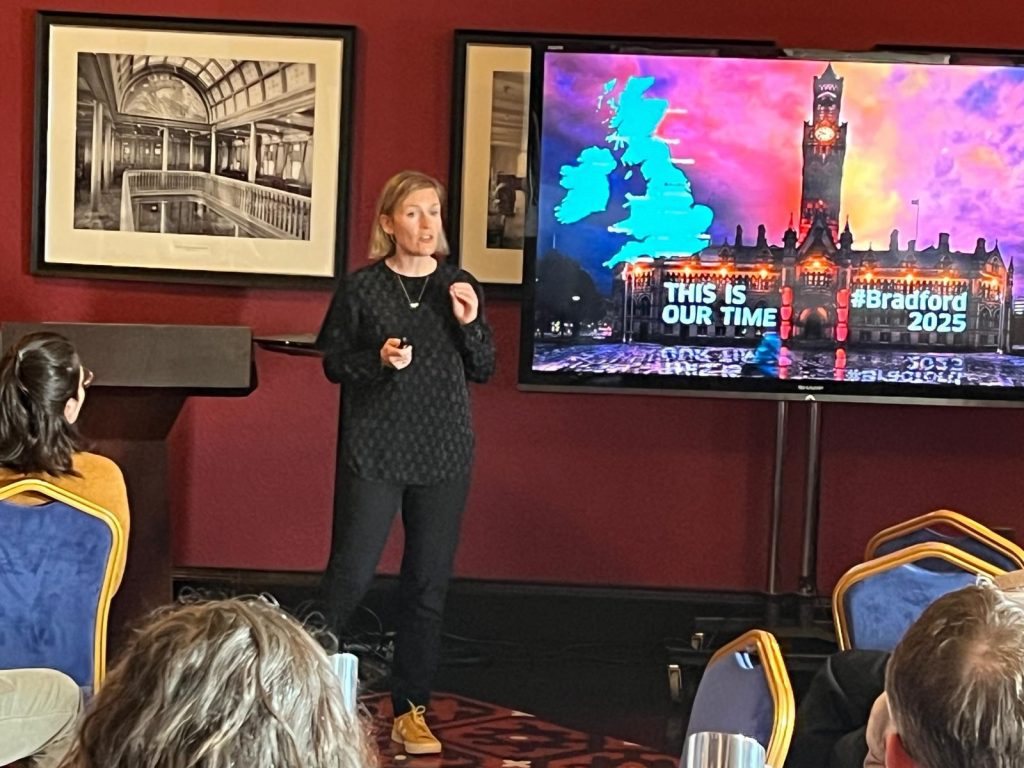
Dr Neil Rowland
People in all regions of the UK are breathing cleaner air than they did decades ago, but many are still exposed to levels of air pollution that pose a risk to their health. Pollution exposure varies depending on where you live, and different places face different air quality challenges. In Northern Ireland, for example, high levels of domestic coal burning create heightened problems with particulate matter in the wintertime, whereas in the south-east of England shipping emissions are a relatively bigger concern.
There is one challenge facing all regions, however: urban pollution from road transport. Towns and cities suffer from worsened air quality because of the large number of vehicles on our roads, with 41.7 million licensed vehicles in the UK as of 2024[1]. Low Emissions Zones (LEZ) – otherwise called Clean Air Zones (CAZ) – are one measure aimed at tacking this problem. First introduced in Sweden in 1996, they aim to disincentivise (or prohibit) the use of high-polluting vehicles in certain areas, often via charges/fees levied on drivers of such (typically older) vehicles. Hundreds of zones now operate around the world, creating opportunities to learn about their impact.

Although several zones now operate in Great Britain, there are none on the island of Ireland. Should cities in Northern Ireland (NI) or the Republic of Ireland (RoI) consider introducing LEZs? With this question in mind, Dr Neil Rowland, Regional Clean Air Champion for Northern Ireland, convened a workshop to discuss the latest evidence on their effectiveness and implementation. Attended mainly by government agencies and local authorities across the island as well as civil society groups, the meeting involved a series of presentations by expert
speakers as well as a discussion session. The event took place in the Titanic Hotel, Belfast, and was supported by the UKRI Clean Air Programme, Queen’s University Belfast, and Administrative Data Research Northern Ireland.
After opening remarks from Professor Sir Stephen Holgate, the first speaker, Dr Gary Fuller, Imperial College London, opened the first session by discussing some of the misunderstandings surrounding LEZs, drawing on evidence from the evaluation of London’s first zone in 2008 to the ultra-low emission zone (ULEZ) in 2024, as well as from zones in Germany and small-scale bus-only zones in the United Kingdom. The zones were shown to accelerate the use of cleaner vehicles and improve air quality. Although the benefits spread beyond their boundaries, since cleaner vehicles are used not only within zones but also outside them, these benefits are very time- and place-dependent.
The next speaker, Sarah Legge, shared key insights from a recent Clean Air Fund report she led at Arup, which offers practical guidance to cities seeking to implement CAZs. This guidance stressed the importance of tailoring the zone to the city’s needs and situation, utilising transport, pollution and air quality data to develop an effective scheme, and ensuring good communication and engagement to win support from different publics. A notable takeaway was that there is no “one-size-fits-all” approach.
The second session began with Laurence Mounce, Department for Environment Food and Rural Affairs/Department for Transport’s Joint Air Quality Unit (JAQU), who presented information about the main CAZs in England outside of London and described JAQU’s work with local authorities (LAs) to develop, implement and evaluate measures to deliver compliance within legal limits for nitrogen dioxide.

He emphasised that CAZs are just one of a range of possible measures that can be adopted, and that some LAs opt for alternatives where they still deliver compliance in the fastest possible time. Reflecting Sarah Legge’s comments, he commented that local factors are an important consideration when choosing among alternative measures. If they are to be implemented, however, Laurence showed that CAZs may be configured in different ways to suit the local conditions.
Scientific evaluations have revealed much about the effectiveness of current LEZs, but what might they look like in the future? Professor Francis Pope from the University of Birmingham examined this question and explained how LEZs could be optimised to improve air quality now and in the future. Noting changes in travel patterns after Covid-19, such as fewer habitual commuting trips, LEZs could evolve to become dynamic, with varying boundaries and restrictions depending on real-time air quality and traffic conditions. Technological improvements that have enabled better emissions monitoring could better identify and manage high-polluting vehicles, though enforcement and cost considerations are challenges to be accounted for.

The final session focused on evidence for the health benefits of CAZ/LEZs. Professor Rosie McEachan, Director of Born in Bradford, Bradford Institute for Health Research, documented reductions in General Practice (GP) and emergency hospital admissions following the implementation of the Bradford CAZ, suggestive of improved respiratory and cardiovascular health among residents. Rosie also drew attention to the importance of engaging with local communities to educate people about CAZs, showing how political-economic factors are an important aspect of the implementation process.
The final speaker, Dr Rosemary Chamberlain, shared the results of her systematic review of LEZ health studies from the UK, Europe and beyond. Her rigorous study found that some LEZs have had positive effects on various cardiovascular health outcomes.
Several themes that ran through the presentations were picked up in a lively discussion, chaired by Dr Fuller and Sarah Legge. This included the importance of tailoring LEZs (or other measures) to local contexts, ensuring community engagement during the design and implementation process, and paying attention to and addressing environmental justice issues such as disparate impacts on disadvantaged groups. Various implementation challenges were also highlighted, including the high up-front costs of vehicle upgrades, tight government budgets, and few affordable or time-effective public transport options for people living in rural areas. The workshop was drawn to a close by Professor Holgate, who left attendees with many inspiring remarks. Attendees were left with much to ponder, but those considering whether CAZ/LEZs are right for cities in NI or the RoI were much better informed as a result.
[1] https://www.gov.uk/government/statistics/vehicle-licensing-statistics-2024